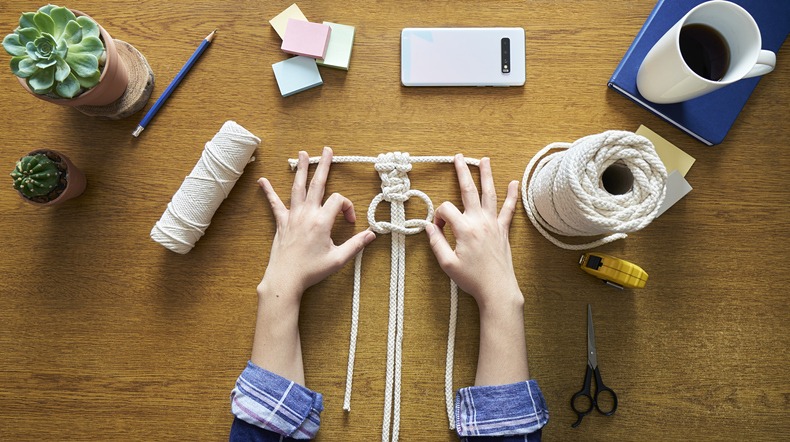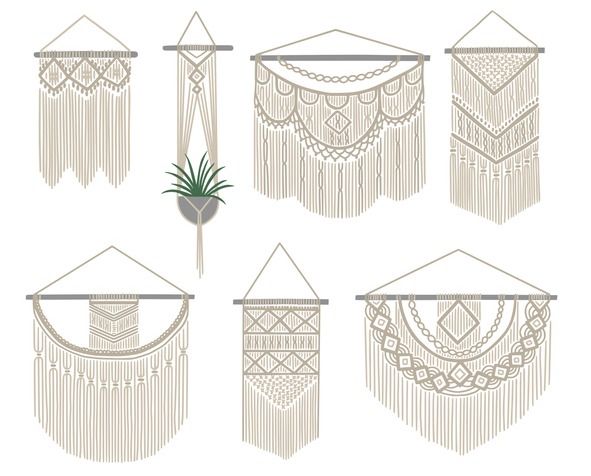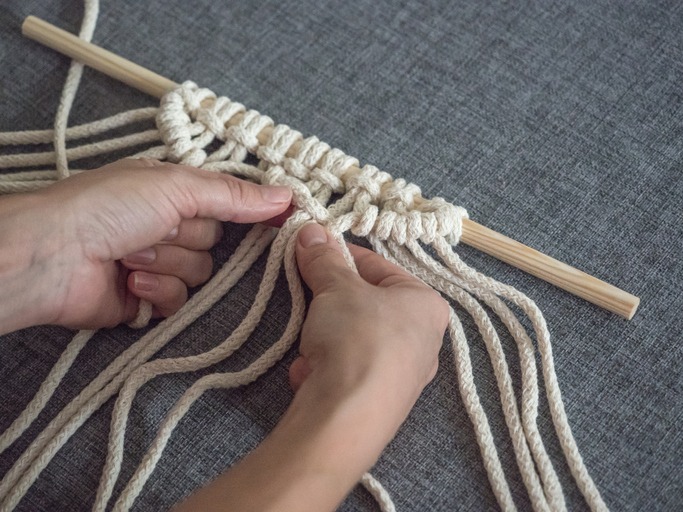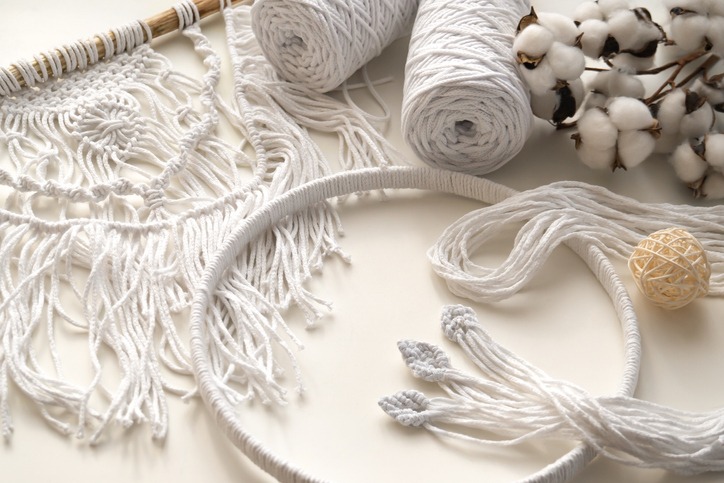When talking about macramé crafts, people tend to think about bohemian styles. Macramé is a crafting technique that uses basic knots to develop artistic designs and create textiles used by early Arabs in the 13th century. However, some historians believe that artifacts made from knotting techniques were used by ancient Arabs, Babylonians, and Persians.
History of Macrame
In the 17th century, macramé was introduced to England where the craft reached its peak popularity and women started to patronize the same. According to history, it is believed that macramé crafting was spread across borders through the sailors and seafaring men. Eventually, this knotting technique had reached almost the whole world and was used in different kinds of art and expressions.
In the earliest times, Macrame was used by the Babylonians and Assyrians. People of that time even made several types of costumes using the Macrame technique. Besides, Arab weavers used to create different types of hand-loomed cloth products such as towels and shawls. They were sold at a high price mainly because of the decorations that could be completely customized as per the customer’s requirements. Even the word “Macrame” comes from the Arabic language which means “striped towel” or “embroidered veil”. Sometimes, the decorative fringes were also used for animals such as camels and horses. This was done so that flies were kept away from the animals.
However, experts believe that the Macrame technique was at its peak during the Victorian era. This is because most households of that time used this technique to create different types of decorative items such as tablecloths and curtains. Several of these items were also sold on a mass scale and it is known to be one of the most popular industries of the Victorian period. Furthermore, popular books such as “Sylvia’s Book of Macrame Lace (1882)” provided detailed guidelines about the Macrame technique. It covered great aspects for home wear, garden wear, underlines, and several other forms of decorative fabrics as well.

Macrame as a Craft
Macramé technique is revived by people who love handcrafting. It has made its comeback as a decoration and fashion trend. Materials used in macramé also developed over time. From bare hand-loomed fabrics, simple materials such as cotton twine, jute string, and hemp fiber are now being used by weavers. Also, from towels and scarves, this knotting technique is being used to make plant hangers, fabric belts, fashion jewelry, and even in a pair of slippers.
Before successfully making a beautiful handmade piece, here are the commonly used materials and tools used in macramé:
Essential Materials in Making Macramé
- Cotton Twine – This is sometimes called a cotton ball and is available in balls and in cones.
- Abaca Twine – This material is popular in making scrapbooks and card making.
- Nylon or Rayon – This is a synthetic polymer with a silky finish braid.
- Waxed Linen – This is used to make popular and beautiful homemade bracelets and necklaces.
- Waxed Cotton Cord – This is made of biodegradable material extensively used for jewelry creation.
- Waxed Nylon –This is a trendy material popularly used in making square knot bracelets.
The following are the must-have tools in making macramé:
- Macramé working board – a well-patterned board used to hold cords in place
- Crochet Hook – used to tuck loose cords at the back of the macramé design
- Cord Dispenser – this simply holds the cord to avoid tangled cord
- Scissors – a popular tool to cut cords.

Macrame Knots
There are several types of knots that are used to make macramé artifacts. But here are the two (2) popular basic knots:
Square Knot
A square knot requires at least four (4) cords to tie this type of knot or two (2) flat knots. In making a square knot, put the two (2) cords in the center to serve as base cords and work on the remaining two cords on the left and right. To start with the knot, put the left cord above the base cords and right cord. A loop is formed by the left cord due to this step. After that, place the end of the right cord under the left cord over it and put the edge of the right cord through the loop created by the left cord. Repeat this process and make several square knots. This may be used to make a bracelet.
Hitches
This knot is also known as the Clove Knot or the Clove Hitch Knot. This knot uses one (1) cord to serve as a filler cord to go across the remaining cords which will be the working cords. To make this knot, put the left cord or the filler cord above and across the other cords. Take the first working cord forward and around the filler cord to form a loop facing the filler cord. Then continue with the second working cord and so on.
Other basic knots can be used in making beautiful macramé artifacts. These are the following:
- Vertical Hitch
- Long Barrel Knot
- Wind Knot
- Lark’s Head Knot
- Capuchin / Barrel Knot
- Clear Edge Method
- The Connecting Knot.
The Value of Macrame Crafting
Macramé has traveled through time and existed as an integral part of traditional culture. Since macramé uses materials that are natural and completely biodegradable, artifacts made out of this technique can be great eco-friendly handmade pieces. These materials help conserve resources and are not harmful to the environment. Part of these materials are the handmade elements that add beauty and value to this art form.
It’s a great hobby for all types of people including busy moms, people who love crafts, and decorators. Handmade artifacts were proven to help those people undergoing medication or those who are in the process of rehabilitation. This induces positive energy and knotting the cords provides a relaxing activity that helps reduce stress and occurrence of anxiety. This activity also implies the benefit of self-expression through the creation of a beautiful self-made artifact.

Is Macrame Relevant Today?
Despite the fact that Macrame is one of the most interesting activities anyone could perform, it is not popular today. In underdeveloped countries as well as the rural areas of developed countries, Macrame is still practiced on a minor scale. However, on a large scale, neither are there any organizations nor is there any form of public interest in the activity. Even those who love arts and crafts find Macrame not very relevant because this isn’t what many people admire. It is considered as a “granny” activity and so, if any young person indulges themselves in Macrame, they aren’t appreciated much.
Read more about essential tools for model building here – Essential Tools for Model Building
Conclusion
Macrame is one of the best activities anyone can practice at home. Although Macrame isn’t practiced on a mass scale today, it is still a great way to kill time. You can create different types of objects with the Macrame technique and even sell them as well. Arts and crafts is a great hobby and many people practice it. We hope our article about Macrame has helped you in getting to know about the essentials.

